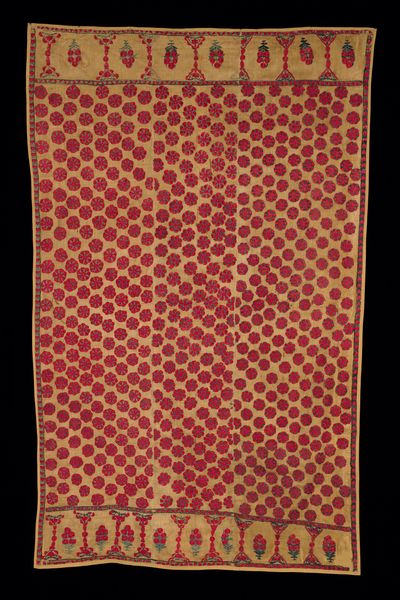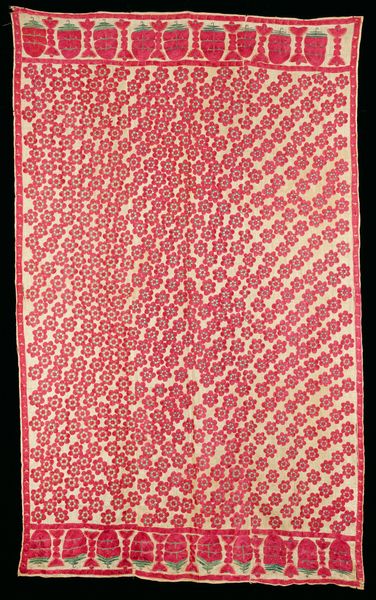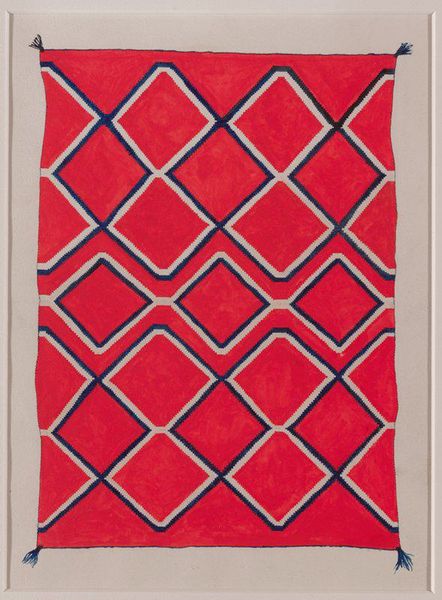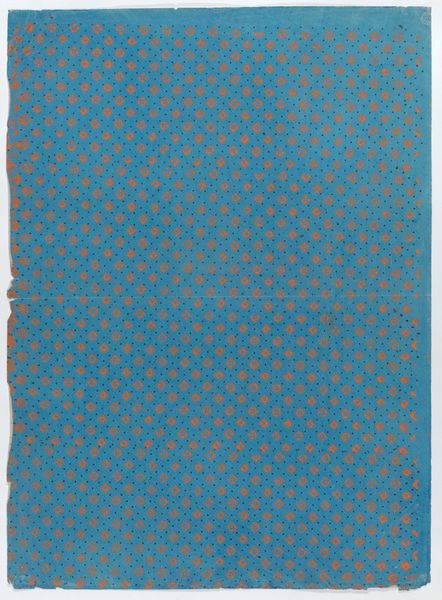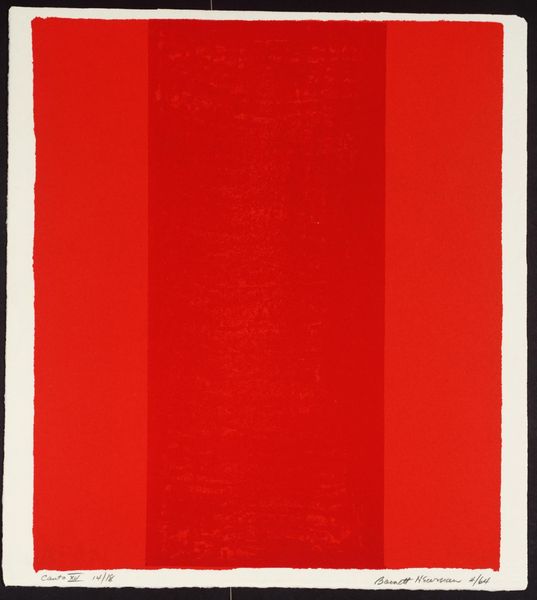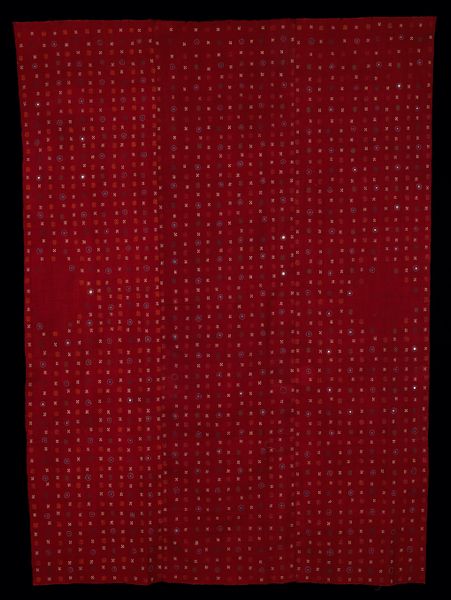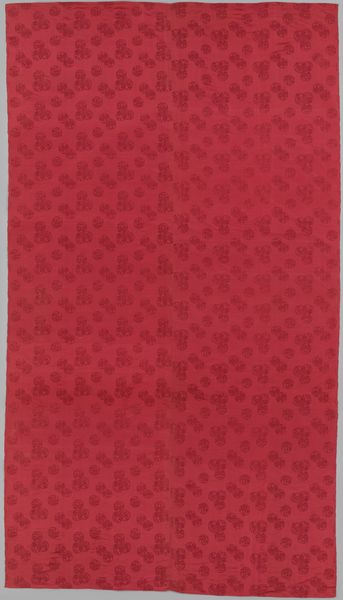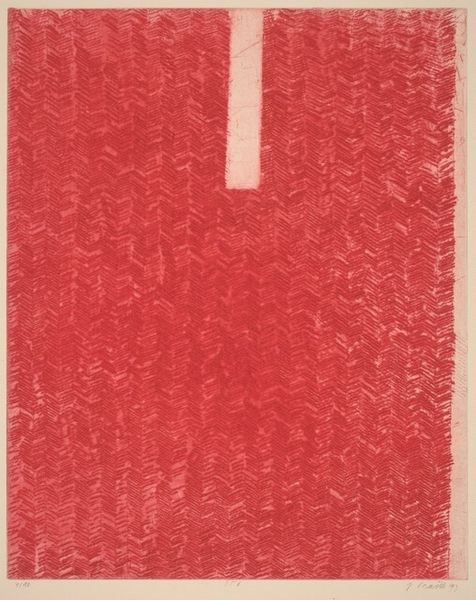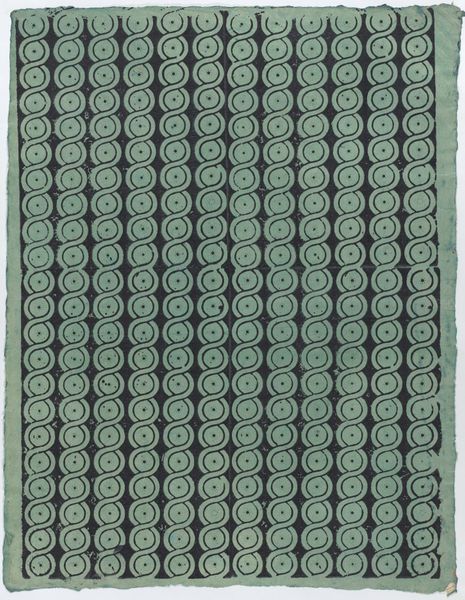
fibre-art, weaving, textile, cotton
fibre-art
asian-art
weaving
textile
geometric pattern
geometric
cotton
Dimensions: 100 9/16 x 60 in. (255.43 x 152.4 cm)
Copyright: Public Domain
Editor: Here we have a Phulkari, a head cover or shawl from around the 19th century, currently held at the Minneapolis Institute of Art. It is textile artwork composed of cotton and silk. The red background is quite striking, and it’s covered in this beautiful geometric pattern, diamonds laid across the entire piece. What do you see in this work, in terms of its materiality and process? Curator: For me, this piece speaks volumes about the lives and labor of the women who likely created it. The cotton and silk, while seemingly simple materials, would have required significant skill to weave and embroider. Phulkari, meaning "flower work," wasn’t just about aesthetics; it was about community. Consider the intensive handwork: each stitch placed with intention, passed down through generations. We often overlook the sheer effort embedded in textiles like this. Where did the materials come from, and who controlled their access? Editor: That's fascinating. It makes me think about the role of women in creating these intricate designs. Was it purely a domestic craft, or did it have a wider economic impact? Curator: It's both. Initially, primarily a domestic activity, it signified a family's resources and women’s expertise. The vibrant colours held symbolic significance reflecting social standing, local ecology and cultural identity. Now, in terms of economics, Phulkari represents women's entrepreneurial agency within their local market setting. Looking closely, one could discern subtle differences indicating maker’s individual interpretation or affiliation revealing how handmade practices provide not only livelihoods but platforms too - almost like digital networks pre-internet. What do you make of that? Editor: It’s amazing to consider how much information is embedded in the making and use of something like this! I never thought about textile art in terms of entrepreneurial activities, or how deeply material signifies social status, economy, ecology. I definitely see more in this than simply surface-level “flower work”. Curator: Precisely. The value of craft like Phulkari lies not only in the visual appeal, but in understanding its historical and cultural processes; recognizing and revealing social frameworks around art production revalues our engagement by humanizing artistry itself.
Comments
No comments
Be the first to comment and join the conversation on the ultimate creative platform.
